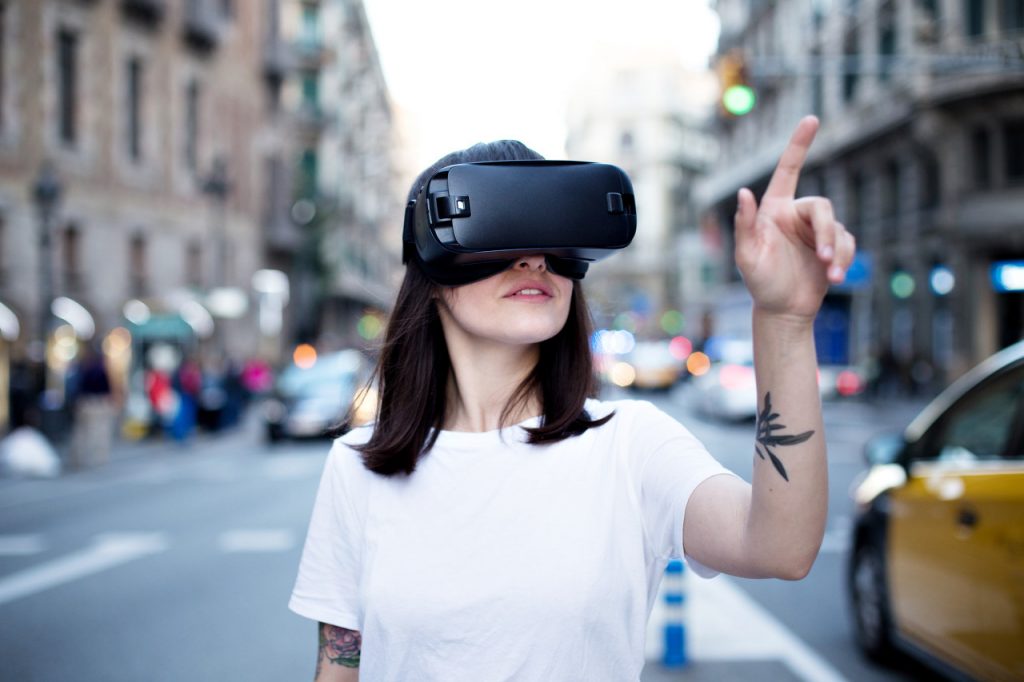Augmented Reality (AR) is a rapidly evolving technology that overlays digital content in the real world, providing users with an immersive and interactive experience. While AR has been widely used in various fields, including gaming, education, and healthcare, its potential in the entertainment industry, particularly in movie watching, is still largely untapped.
In 2015, using the technology for movie watching will have probably seemed like a gross underutilization of the technology. However, despite the promising future of AR, its primary product — AR glasses — has encountered significant challenges in appealing to everyday consumers to maintain a sizeable market that can support all the producers in the industry.
Why Movies?
While AR has numerous potential applications, its applications may only be relevant to some people’s daily activities or interests. For one to see a practical need for AR in their personal or professional lives, they need to engage in daily activities that involve gaming, design, or remote training.
What that means is that most individuals — or the majority of the population at least — will not see the need to possess their own AR gear. When there is only a very small niche audience to cater to, companies will have no incentives to innovate. Most importantly, there may be insufficient demand to sustain the supply entering the industry, leaving companies no room for price negotiation. Hence, companies have started to turn to the movies as a potential avenue to reach out to and engage the mass market.
The Start of A New Industry

In the past year, several companies, including Huawei, OPPO, Xiaomi, Google, Nreal, Thunderbird, Rokid, Lenovo, and LLVISION have introduced their own AR glasses. These companies, based in China and the United States, have priced their AR glasses between USD 300–500.
However, since the development of Microsoft’s HoloLens and Magic Leap’s AR headset, progress in AR glasses has stalled due to challenges related to technical implementation, interaction, optical display, and overheating. Reducing the weight of AR glasses while maintaining performance proved difficult, even for companies like Apple, and the price point remained high. Additionally, consumer understanding of the potential of AR glasses remained uncertain.
However, in 2022, manufacturers identified a new segment to focus on: AR movie watching.
From the beginning of this year, ‘movie watching’ has emerged as a major selling point for AR glasses. Manufacturers like Thunderbird and Nreal have launched AR glasses, with the Thunderbird Air 1S utilizing Birdbath + Micro OLED technology to deliver a 130-inch high-definition large-screen experience, perfect for movie watching, gaming, office work, UAV operation, and intelligent cockpits.
Nreal Air, which dubs itself the “AR Glasses for a Big-Screen Lifestyle,” heavily emphasizes the AR viewing experience in its marketing materials. Nreal has even partnered with NIO, a Chinese new energy vehicle manufacturer, to create in-car AR glasses called NIO Air AR Glasses designed specifically for in-car cinema experiences.
The rationale behind using AR glasses for movie watching is that virtual large-screen displays can significantly reduce the performance requirements and complex design of AR glasses’ interaction features. By using wired connections, AR glasses can focus on the optical display aspect, reducing technical difficulties and weight. This allows for a more comfortable wearing experience similar to ordinary glasses, while the near-field display of AR glasses theoretically provides a more immersive viewing experience than other display devices. Additionally, there are plenty of 2D movie resources already available for AR glasses.
This generation of AR glasses is slimmer and more focused on display and viewing-based scenarios than previous versions. The product design is similar to ordinary sunglasses, which consumers are already accustomed to. Reducing the weight of AR glasses is also a priority for manufacturers, as wearability is a crucial factor for consumers.
Weight plays a crucial role in the usability of AR glasses for movie watching, given that most movies have a runtime of 90–120 minutes, and some epic films like “Avatar: The Way of Water,” released in 2022, can last over three hours. If AR glasses are too heavy, they can seriously detract from users’ comfort and overall viewing experience. Long movie durations require prolonged wearing of AR glasses, and any discomfort due to weight can result in user fatigue, discomfort, or even pain, detracting from the immersive experience that AR glasses aim to provide. Therefore, manufacturers are highly aware of the need to keep AR glasses lightweight and comfortable, closely mimicking the design and weight of regular sunglasses to ensure that users can wear them comfortably for extended periods while enjoying a seamless and immersive movie viewing experience.
Do Consumers Want AR Glasses?

Manufacturers often describe today’s AR glasses as a “cinema in your pocket” to highlight their portability and large screen features. However, using terms like “giant screen” or “cinema-grade” to describe AR glasses can be misleading. For instance, the claimed screen sizes of AR glasses, such as Nreal’s 130-inch or 201-inch screens, are limited in their functionality and performance at specific distances. Moreover, the resolution of AR glasses, usually at 1080P, determines the upper limit of their screen definition.
Furthermore, compared to mainstream smartphones with higher-quality screens, AR glasses face limitations in terms of screen quality, viewing experience, and additional features such as HDR, Dolby Vision, and panoramic sound. Most people would also prefer to use their mobile devices for movie viewing, which they are more accustomed to. Additionally, most AR glasses require wired connections with external devices like cell phones or computers, which restrict their compatibility and potential user base.
With all the above, AR glasses are more likely to be perceived as a novelty for viewing experiences, with cumbersome operating methods and user experience often leading to them being discarded and left unused, collecting dust.
The Future of AR Movie Watching
AR has always been the subject of imagination and high expectations, with technology giants and startups viewing it as a potential opportunity that could eventually be as lucrative as the smartphone industry.
Most manufacturers do not have the luxury of waiting, as they face high research and development costs and limited cash reserves. Therefore, they must find a viable path as soon as possible. Xu Chi, the founder of Nreal, has mentioned that a significant portion of the funds raised by their company has been invested in research and development.
The AR glasses launched this year may not necessarily represent the future of AR, as ongoing efforts are being made to develop even lighter products. For instance, Google introduced “ordinary” AR glasses at this year’s I/O conference, focusing on translation and transcription of dialogue, a direction also pursued by LLVISION. Xiaomi’s Mijia Glasses Camera and Li Weike Technology’s Meta Lens S1 are geared toward outdoor sports scenarios, primarily focusing on video and voice navigation.
It’s worth noting that smartphones didn’t become what they are today overnight. The first generation of iPhones and Android devices were initially limited in functionality, with no app ecosystem or App Store. However, over a decade, the evolution of iOS and Android and advancements in cell phone manufacturing and supply chain technology transformed smartphones into ubiquitous devices. While it’s possible for AR glasses to reach the reliability and relevance of mobile phones, it’s an endeavor that requires time and patience.
This article was adapted based on a feature originally written by Winter Jam and published on Lei Technology (WeChat ID: leitech). KrASIA is authorized to translate, adapt, and publish its contents.

